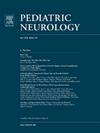小儿神经科患者遗传学转诊和完成率的社会决定因素
IF 3.2
3区 医学
Q2 CLINICAL NEUROLOGY
引用次数: 0
摘要
研究临床、社会和系统层面的决定因素,预测儿科神经病学患者遗传学门诊转诊和遗传学门诊就诊的完成情况。方法提取2018年7月至2020年1月在一家三级医疗机构儿科神经病学诊所评估的0-18岁儿科患者的电子健康记录(EHR)数据。采用双变量分析比较非西班牙裔单种族或多种族黑人(Black)与非西班牙裔白人(White)患者的转诊和转诊完成率。由于人数少,其他民族身份被排除在外。使用逻辑回归确定与遗传学诊所转诊和就诊完成相关的变量。结果在11371例小儿神经内科患者中,有304例转诊到遗传学诊所,229例(75.3%)完成了遗传学诊所就诊。在对黑人和白人患者(n = 10,601)的多变量分析中,遗传学诊所转诊率没有因种族身份而差异,但与年龄、农村、神经发育障碍诊断、神经病学诊所就诊次数和提供者类型有关。遗传学诊所访问完成率与神经病学诊所访问次数和种族身份相关,白人患者完成访问的可能性是黑人患者的两倍(调整后优势比=2.18;95%置信区间1.06-4.48)。结论:虽然没有发现遗传诊所转诊率的差异,但白人患者在转诊后完成遗传诊所就诊的可能性是黑人患者的两倍。需要进一步的工作来确定这是否是由于系统性/结构性种族主义,对遗传态度的差异,或其他因素。本文章由计算机程序翻译,如有差异,请以英文原文为准。
Social Determinants of Genetics Referral and Completion Rates Among Pediatric Neurology Patients
Background
To investigate clinical, social, and systems-level determinants predictive of genetics clinic referral and completion of genetics clinic visits among pediatric neurology patients.
Methods
Electronic health record (EHR) data were extracted from pediatric patients (0-18 years) evaluated in pediatric neurology clinics at a single tertiary care institution between July 2018 and January 2020. Referral and referral completion rates to genetics clinics were compared among non-Hispanic single- or multiracial Black (Black) versus non-Hispanic White (White) patients using bivariablee analysis. Other ethnoracial identities were excluded due to small numbers. Variables associated with genetics clinic referral and visit completion were identified using logistic regressions.
Results
In a cohort of 11,371 pediatric neurology patients, 304 were referred to genetics clinic and 229 (75.3%) completed genetics clinic visits. In multivariable analyses of Black and White patients (n = 10,601), genetics clinic referral rates did not differ by ethnoracial identity but were associated with younger age, rurality, neurodevelopmental disorder diagnosis, number of neurology clinic visits, and provider type. Genetics clinic visit completion rates were associated with number of neurology clinic visits and ethnoracial identity, with White patients twice as likely as Black patients to complete the visit (adjusted odds ratio=2.18; 95% confidence interval 1.06-4.48).
Conclusions
Although no disparity in genetics clinic referral rates was identified, White patients were twice as likely as Black patients to complete a genetics clinic visit after referral. Further work is needed to determine whether this is due to systemic/structural racism, differences in attitudes toward genetics, or other factors.
求助全文
通过发布文献求助,成功后即可免费获取论文全文。
去求助
来源期刊

Pediatric neurology
医学-临床神经学
CiteScore
4.80
自引率
2.60%
发文量
176
审稿时长
78 days
期刊介绍:
Pediatric Neurology publishes timely peer-reviewed clinical and research articles covering all aspects of the developing nervous system.
Pediatric Neurology features up-to-the-minute publication of the latest advances in the diagnosis, management, and treatment of pediatric neurologic disorders. The journal''s editor, E. Steve Roach, in conjunction with the team of Associate Editors, heads an internationally recognized editorial board, ensuring the most authoritative and extensive coverage of the field. Among the topics covered are: epilepsy, mitochondrial diseases, congenital malformations, chromosomopathies, peripheral neuropathies, perinatal and childhood stroke, cerebral palsy, as well as other diseases affecting the developing nervous system.
 求助内容:
求助内容: 应助结果提醒方式:
应助结果提醒方式:


